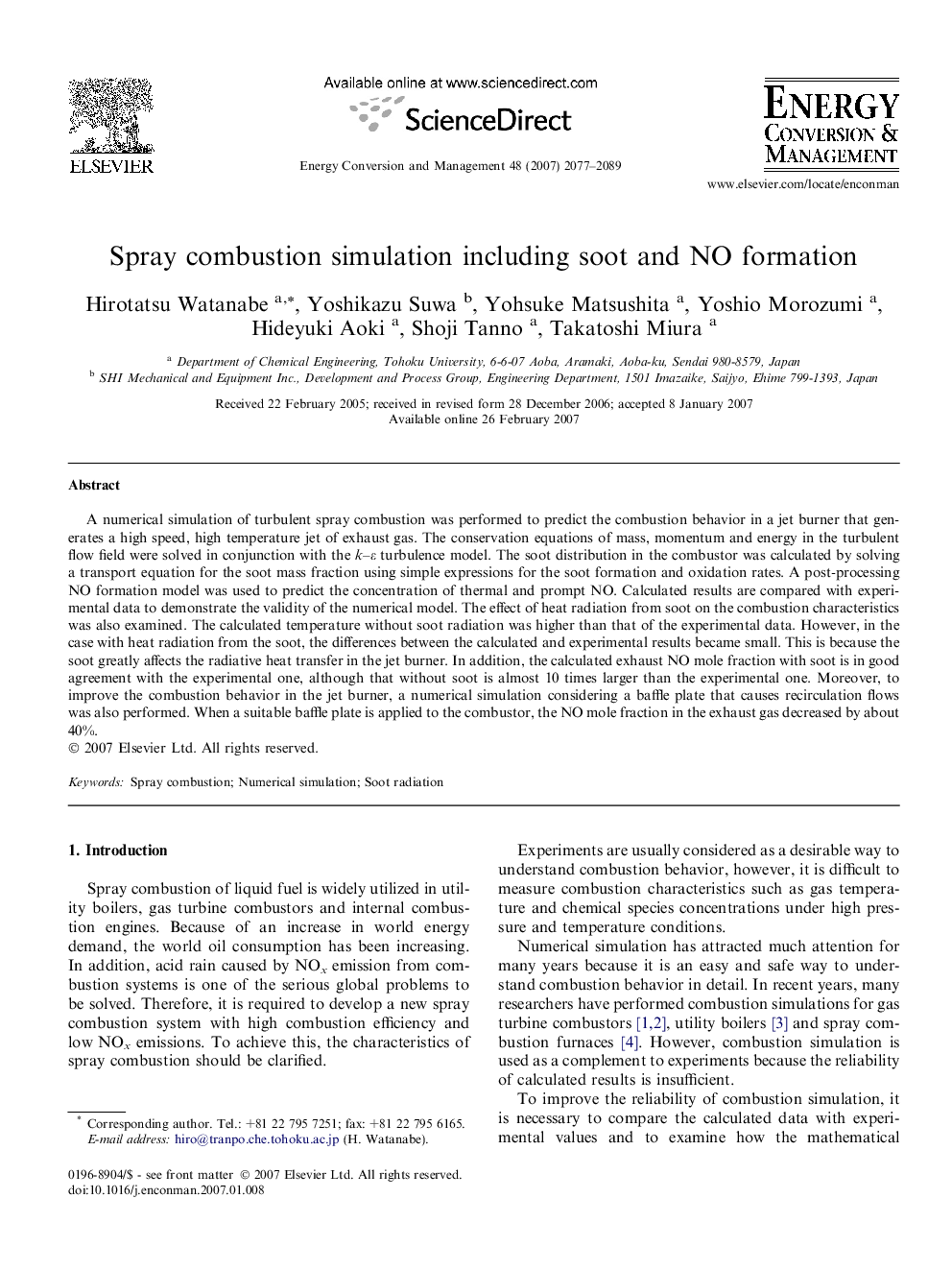| Article ID | Journal | Published Year | Pages | File Type |
|---|---|---|---|---|
| 772980 | Energy Conversion and Management | 2007 | 13 Pages |
A numerical simulation of turbulent spray combustion was performed to predict the combustion behavior in a jet burner that generates a high speed, high temperature jet of exhaust gas. The conservation equations of mass, momentum and energy in the turbulent flow field were solved in conjunction with the k–ε turbulence model. The soot distribution in the combustor was calculated by solving a transport equation for the soot mass fraction using simple expressions for the soot formation and oxidation rates. A post-processing NO formation model was used to predict the concentration of thermal and prompt NO. Calculated results are compared with experimental data to demonstrate the validity of the numerical model. The effect of heat radiation from soot on the combustion characteristics was also examined. The calculated temperature without soot radiation was higher than that of the experimental data. However, in the case with heat radiation from the soot, the differences between the calculated and experimental results became small. This is because the soot greatly affects the radiative heat transfer in the jet burner. In addition, the calculated exhaust NO mole fraction with soot is in good agreement with the experimental one, although that without soot is almost 10 times larger than the experimental one. Moreover, to improve the combustion behavior in the jet burner, a numerical simulation considering a baffle plate that causes recirculation flows was also performed. When a suitable baffle plate is applied to the combustor, the NO mole fraction in the exhaust gas decreased by about 40%.
